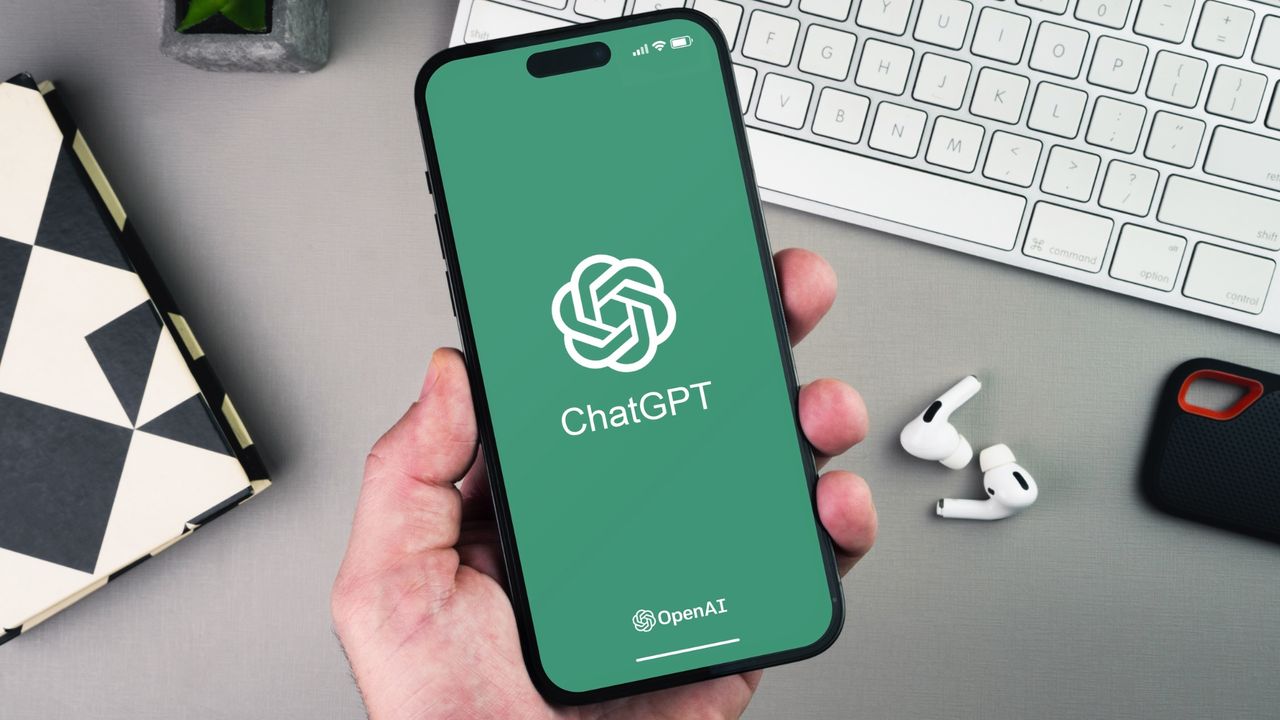
OpenAI's ChatGPT has rapidly become one of the most popular AI models out there, but simply asking it a basic question will only scratch the surface of what it can do.
If you’re ready to move past simple queries and unlock the chatbot's true potential, you need to understand one key concept: it should not be treated like a search engine, but more like a brilliant assistant who needs clear instructions.
The difference between a generic answer and a truly impressive result comes down to how you frame your requests. This guide will walk you through everything you need to know, from the moment you log in, to making ChatGPT work best for you.
1. Sign up and log in
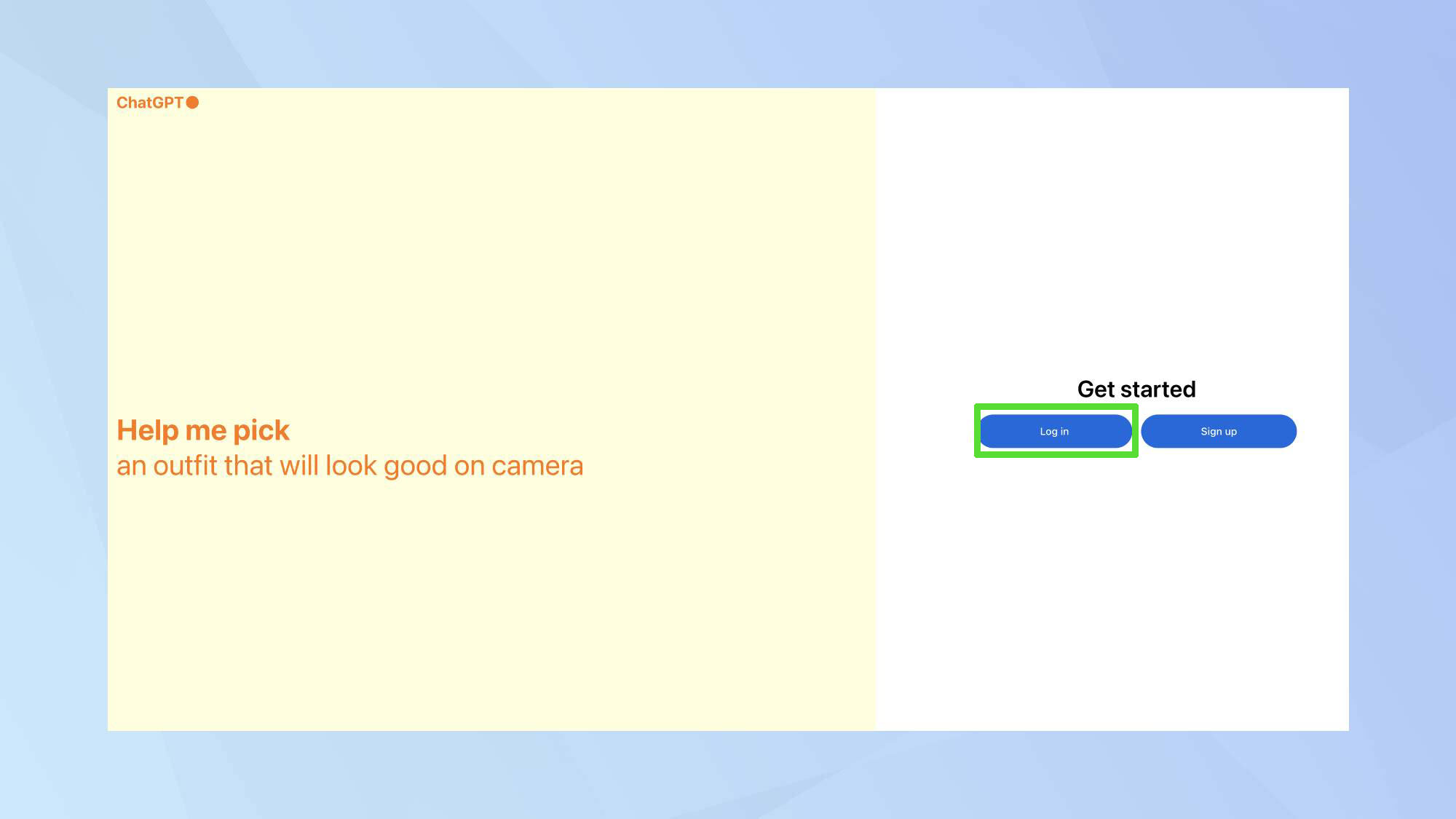
Go to chat.openai.com and create an account using your email address, or sign in quickly with Google, Microsoft, or Apple credentials. The entire signup process takes about 30 seconds and gets you immediate access to the chatbot.
The free tier is incredibly robust and will be sufficient for most casual users. It gives you limited access to the latest model, GPT-5, along with powerful features like web browsing, image generation, and data analysis. For quick questions, brainstorming, or occasional use, you can do almost everything without spending a dime.
ChatGPT Plus, at $20 per month, is the dedicated subscription for daily and professional users. While the free tier is great, Plus removes the frustration of strict rate limits, provides faster response speeds, and unlocks more advanced models.
2. The chat interface
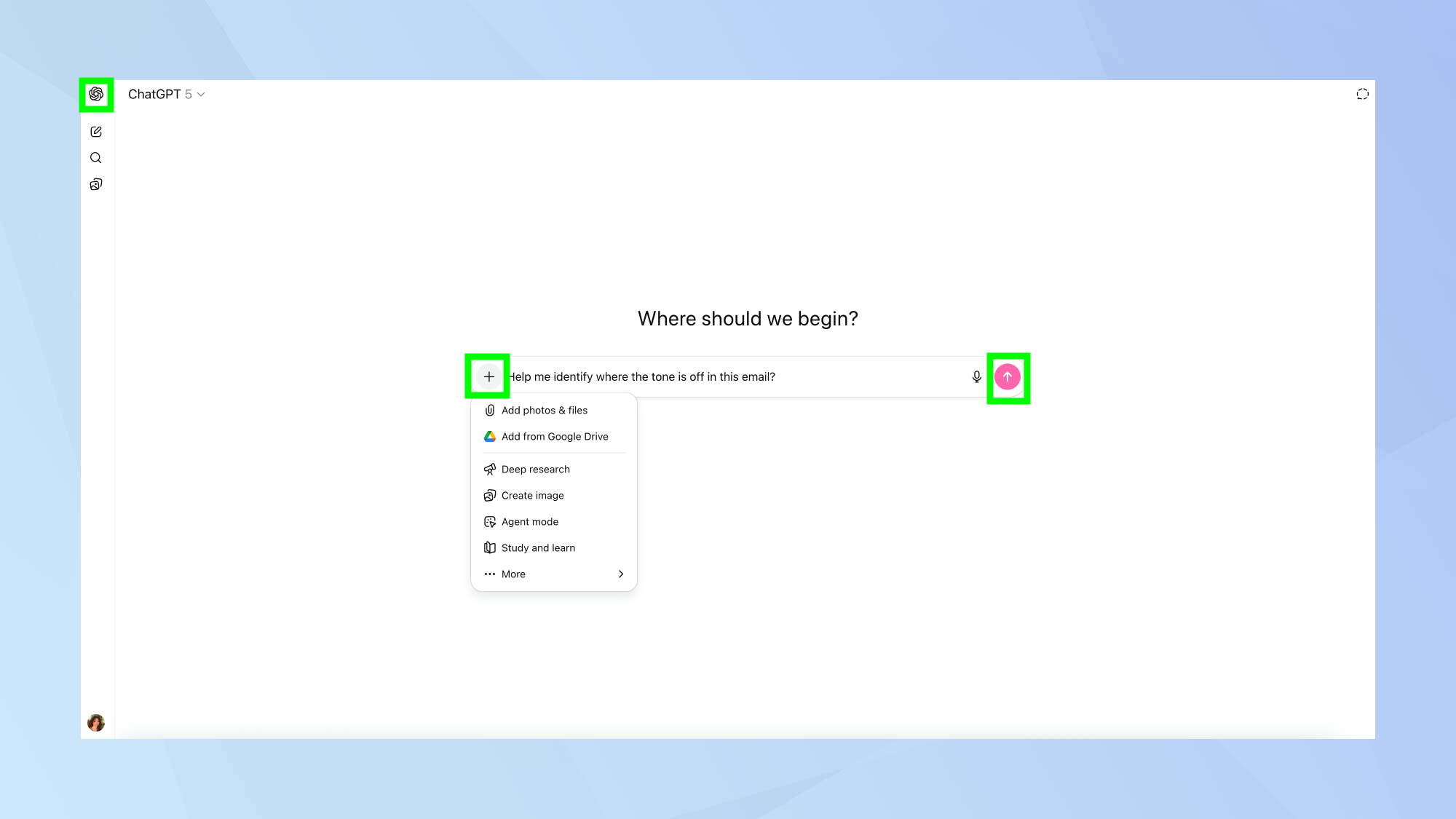
The main chat window works exactly as you’d expect: you type your questions or requests in the text box at the bottom, hit the arrow to generate, and ChatGPT's responses appear. This back-and-forth is key, as each exchange builds on what came before.
The sidebar on the left displays your conversation history, making it easy to jump back to previous chats whenever you need them. By clicking the + icon, you can add photos and files, search the web, and access different modes.
To ensure the chatbot stays focused and sharp, it’s best practice to start a new chat when moving to a completely different topic. Starting a new chat clears the prior conversation context, which prevents the chatbot from getting confused by cramming multiple unrelated projects into one long thread.
3. Crafting successful prompts
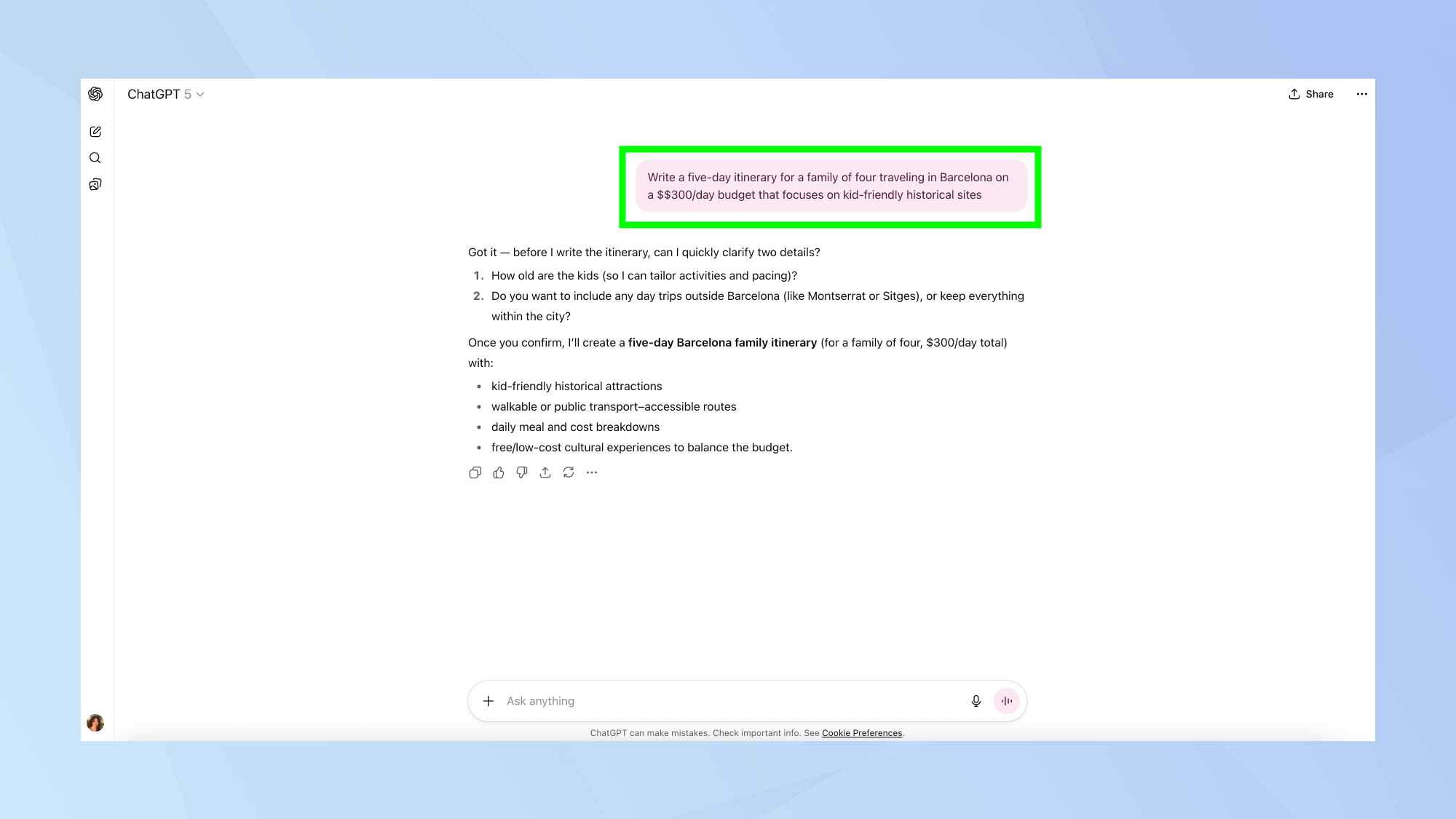
The key to getting useful output from ChatGPT is specificity, not general knowledge. A prompt like: What are the best places to visit in Barcelona? I'm traveling this summer, leaves the AI with too many options, resulting in a generic list you could find anywhere.
Instead, treat ChatGPT like a specialist: front-load your requirements by including constraints like audience, format, length, and tone in your initial request. For instance, changing that simple question to: Write a five-day itinerary for a family of four traveling in Barcelona on a $$300/day budget that focuses on kid-friendly historical sites, gives it clear parameters and produces something immediately usable.
As previously mentioned, ChatGPT remembers the full context of your conversation. So if the output misses the mark, edit through dialogue rather than starting over to refine your answers.
4. Generate images
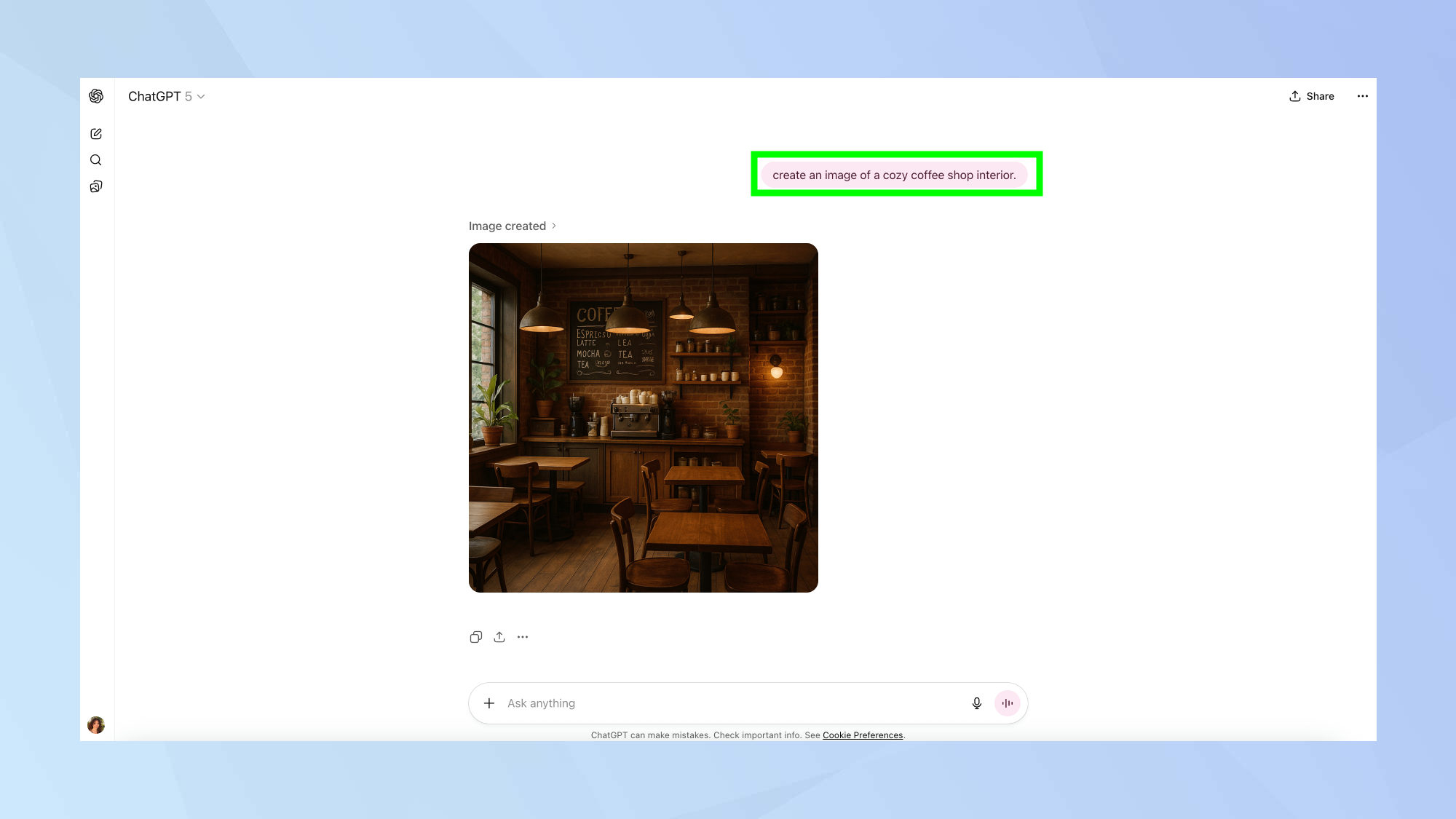
To create visual content, simply describe the image you want directly in your conversation, and ChatGPT automatically triggers its native image generator. Just naturally request things like: create an image of a cozy coffee shop interior.
Detailed descriptions produce significantly better images than vague requests, so be sure to include details about style, composition, colors, and mood. Once an image is created, you can easily iterate on it conversationally, using follow-up messages like: make the mountain taller, or change the color scheme to cool earth tones.
It's worth noting that ChatGPT has content restrictions against real people and copyrighted characters, and it may still struggle to render text accurately within images. And, if you're on the free tier, you'll have a limited number of times you can create images per day.
5. Its practial uses
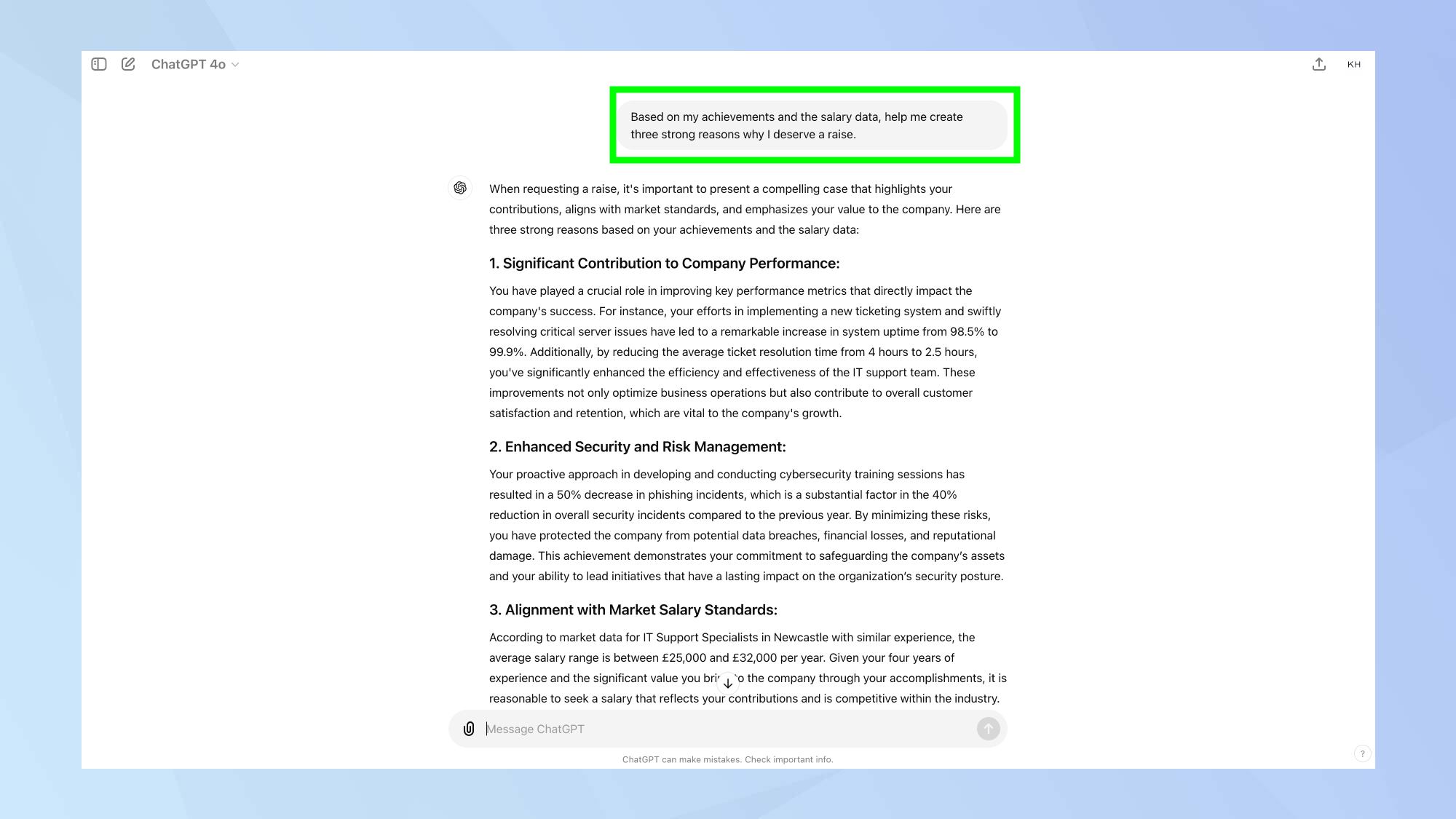
Once you master prompting, ChatGPT becomes an invaluable tool for nearly any task by functioning as an expert co-pilot. For creative and writing tasks, it can help you write your resume, improve your cover letter or even negotiate a higher salary.
For research and logic, it can explain complex concepts at your chosen level — from basic to PhD, or use it for brainstorming and planning by creating your own guides, structuring outlines and examining pros and cons for decisions.
For technical work, it's good for coding assistance, debugging errors, and generating boilerplate code. You can even upload data analysis files, allowing the AI to clean and visualize spreadsheets without you writing a single line of code.
Follow Tom's Guide on Google News and add us as a preferred source to get our up-to-date news, analysis, and reviews in your feeds. Make sure to click the Follow button!







